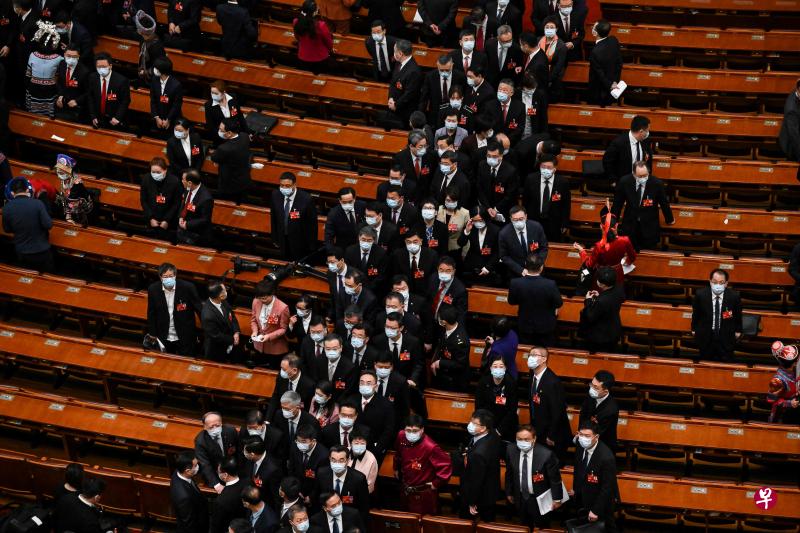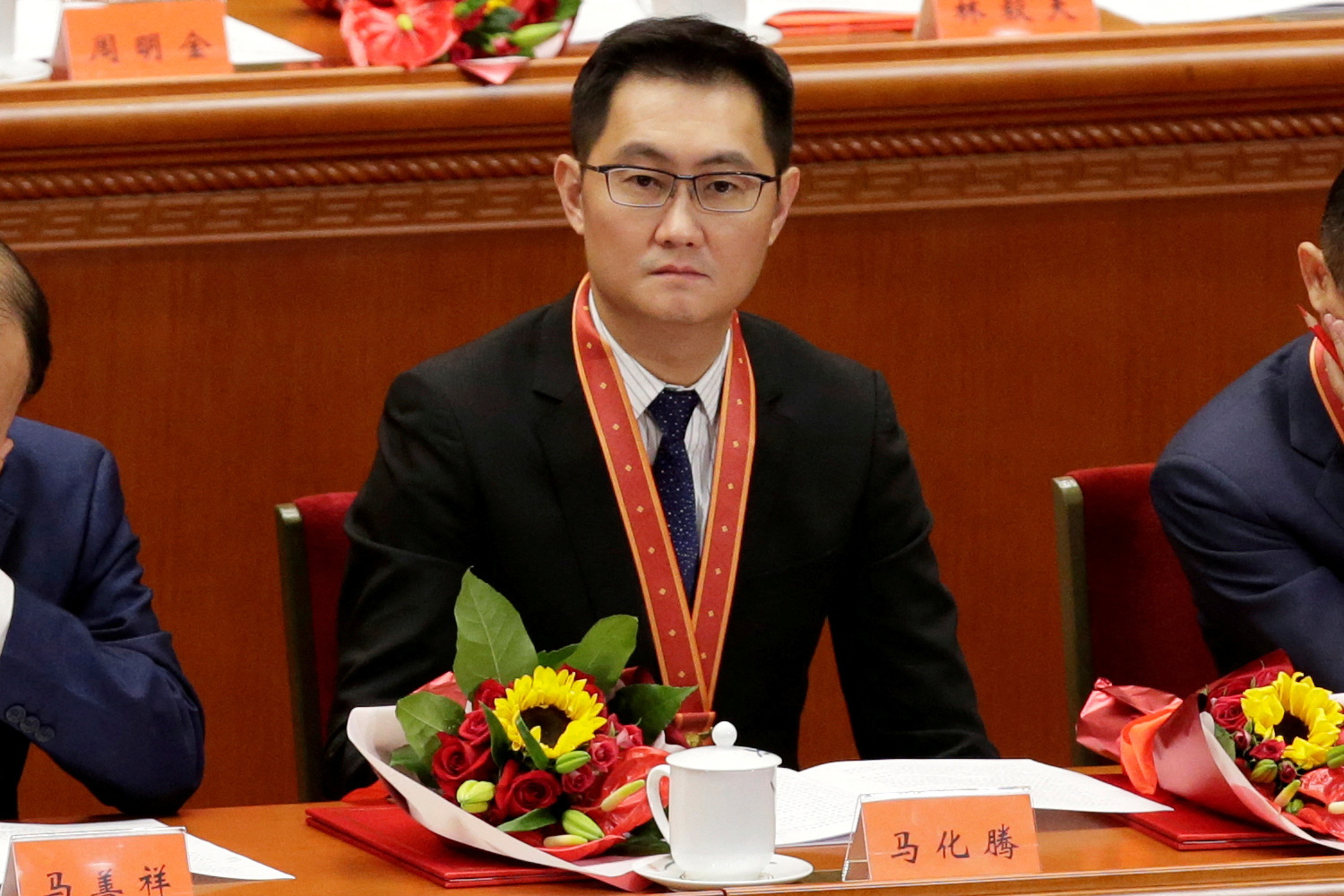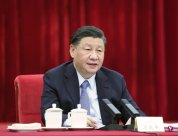
China National Two Sessions (annual meeting of the People's Congress and the CPPCC) officially kicked off last Saturday (March 4).The list of representatives of the National People's Congress or members of the CPPCC no longer see leaders of Internet companies, and replaced by chip and semiconductor industry.
According to the official list, the only surviving online company celebrities of the National People's Congress this year are Yao Jinbo, the founder and chairman of the 58 city.Others such as Ma Huateng, chairman of Tencent's board of directors, and Yang Yuanqing, chairman of Lenovo Group, will no longer be listed.
Among the CPPCC members, the founder of Netease Ding Lei, Baidu founder Li Yanhong, and the founder of Sogou Wang Xiaochuan could not be found.
Internet companies have been regarded as an important engine of China's economic development.However, in the past two years, Chinese regulators have strengthened their review and supervision on the grounds of antitrust and preventing the disorderly expansion of capital.Fine fines.

Ma Huateng, chairman of Tencent's board of directors, who had served as the representative of the two National People's Congress, did not appear on the list of the 14th National People's Congress.The picture shows Ma Huateng attended the event in the Great Hall of the People on December 18, 2018 to commemorate the 40th anniversary of China's reform and opening up.(Reuters)
Bloomberg believes that the Internet giant fades out of the two sessions means that the official has not yet prepared to completely lift the control of private enterprises.Another signal is that the impact of Internet leaders on China's future policy trends will weaken.
A professor of the Party School of the Central Committee of the Communist Party of China, who was unknown, told the Financial Times that the influence and political status of Ma Huateng and others may have declined, which caused them not to be re -elected.
Only the chip industry to be a representative of the People's Congress and a member of the CPPCC
While the Internet giant faded out of the spotlight, many Chinese chip industry characters became new pets.
The representative of the 14th National People's Congress, including Li Shushen, president of the University of the Chinese Academy of Sciences, He Xiaopeng, chairman of Xiaopeng Automobile, Zhang Suxin, chairman of Hui Hong Semiconductor, chip manufacturer Hua Hong semiconductor, Lei Jun, chairman of Xiaomi, and Feng Xingya, general manager of GAC.
Except for Lei Jun, others are the first elected representatives.
According to reports, two suggestions submitted by Lei Jun this year are related to the automotive industry.What is attractive is that for the first time, he wrote the bionic robot industry into suggestions.Zhang Suxin will submit suggestions on the development of the manufacturing industry.He believes that manufacturing is a very important support for China's economic development, and the development of manufacturing is inseparable from talent and technological innovation.
The new members of the CPPCC include smart chip developers, Chen Tianshi, chairman of Cambrian Technology, and Zhou Hongyi, chairman of the software company 360.In addition, there are newcomers from new industries such as robotic manufacturing, laser, aerospace, and aviation on the list of members or representatives.
The term of each representative of the People's Congress and members of the CPPCC is five years.This year's representative or the CPPCC will serve in the third term of Chinese officials.According to the analysis, with the intensification of the Sino -US scientific and technological warfare, the list of representatives of the new National People's Congress and members of the CPPCC highly highlight that China has changed priority development options, and greatly enhances its attention to strategic fields such as semiconductors, electric vehicles and artificial intelligence.
Zhang Huyue, director of the China Legal Research Center of the University of Hong Kong, told Reuters that the new lineup seems to show that the Beijing policy focuses on the clear shift. It is necessary to strengthen scientific and technological capabilities to achieve self -sufficiency and maintain competitiveness in the United States.
She said: In the current geopolitical environment, consumer technology companies have become depressed compared to those hard -euled technology companies.
The Global Political Risk Consulting Company Eurasian Group focuses on Lu Xiaomeng, the director of emerging technology and geopolitics, said that Ding Lei, Li Yanhong and Ma Huateng are symbols of the old times.Participating in the two sessions is equivalent to recognizing the latter's business model, implying that they are the future of Chinese technology.
In fact, many new types of technical bureaucrats have been used to high -level Chinese Communist Party, such as members of the Politburo Ma Xingrui, Zhang Guoqing, Yuan Jiajun and others all have aerospace, aerospace or military background.
China has increased investment in the chip field in many aspects
Scientific and technological plugging is the key areas of China's pressure on China in the past year.By the United States Biden Government, by increasing the restrictions on scientific and technological alliances and exports, restricts China's chip manufacturing capabilities.
Last October, the United States unilaterally upgraded its scientific and technological war against China and announced comprehensive export control measures, hoping to slow down the pace of China's military and artificial intelligence development.In February this year, the United States attracted the Netherlands and Japan to expand its restrictions on China's export -advanced chip manufacturing machines, making China more urgent in this area of its own R & D and investment.
Chinese officials presided over the third collective study of the Politburo of the Communist Party of China in mid -February this year that China should strengthen basic research, realize high -level technology self -reliance, and improve the domesticization of domesticization substitution and application scale in terms of technology instrument equipment, operating systems and basic software.Essence
Li Keqiang, Prime Minister of the State Council of the State Council, who is about to step down on Sunday (March 5) at the opening meeting of the National People's Congress, said that Chinese scientific and technological policies should focus on promoting technology independence and self -reliance.Give play to a better leverage.
Chinese Prime Minister Li Keqiang published the last government work report during his tenure on Sunday (5th) at the opening meeting of the People's Congress.(AFP)
Three sources told Reuters last December that China plans to allocate $ 143 billion (S $ 192.2 billion) in the next five years to promote chip development.Sources said that the funds will be used to provide tax benefits and subsidies to chip manufacturers and R & D activities, and manufacturers such as Shanghai Microelectronics Equipment Group (SMEE) may benefit.The company is the only company in China to develop, produce, and sell high -end optical machines.
According to the Tianyancha website that disclosed the company's registration information, China ’s National Integrated Circuit Industry Investment Fund (referred to as the Great Fund) will also invest 12.9 billion yuan (about S $ 2.5 billion) to China’ s largest memory chip manufacturer.The website shows that the capital injection from the Great Fund is scheduled to be completed on January 31 this year.
In addition, Chinese local governments and private companies have also started to strengthen the development of the chip industry.
China Software Co., Ltd. Jinshan Software established a 10 billion yuan fund with China Science and Technology Giant Xiaomi Group last week, focusing on investment integrated circuits and related upstream and downstream areas.Other investors include entities supported by the Tianjin and Beijing government.The fund also considers other high -tech companies related to chips, including artificial intelligence, new materials, intelligent manufacturing, display technology and automotive electronics.
As the Sino -US science and technology war intensified, China will conduct investment in the chip field in many ways.(Reuters)
Industry insiders: You can't save the chip industry by smashing money alone
However, industry insiders said that unless Chinese companies can achieve innovative results in chip development and separate from the low -end vicious cycle of the low -end of the chip value chain, it will not be able to catch up with Western countries that have a few steps ahead of the field in the field.
Reuters quoted industry insiders and market observers analysis that the sales targets of Shanghai Microelectronics and local counterparts are mainly Chinese chip foundries.They do not have the opportunity to contact advanced chip manufacturers such as TSMC or Samsung Electronics, it is difficult to solve engineering problems independently, and cannot develop to the upstream of the chip value chain.
Some people in the industry believe that China should completely change the method of catching up chip technology and focus on the next generationIn the manufacturing of chips, not to compete with overseas peers, trying to make the integrated circuit on the chip more dense.
The birth of each chip must go through three links: design, manufacturing, and packaging. The main difficulties in China are currently facing the manufacturing link.
Wang Lingfeng, a senior analyst at China Micro Consultation, told the International Finance Report that the key equipment and materials of Chinese manufacturing chips still rely on imports, which has caused the current advanced process to be blocked, and the designed high -end chips cannot be produced on a large scale.In the field of chip design, software such as electronic design automation is also the constraint of Chinese chip companies.
As early as 2014, with the launch of the national integrated circuit industry development and promotion outline and the start of the national integrated circuit industry investment fund (referred to as the large fund), China has set off a wave of chip industry development.As of early October 2020, there were more than 50,000 chip -related companies, and the newly established chip companies alone in 2020 reached 12,740.
According to Bloomberg, the large fund has attracted about $ 45 billion in funds, supporting dozens of companies, including SMIC's integrated circuit manufacturing and Yangtze River storage technology.However, the result of blind investment is huge losses, and rotten projects abound.

Wuhan Hongxin fell into stagnation due to problems such as difficulty in funds in 2020 and became a typical semiconductor rotten project in China in recent years.(Internet)
Pei Ruidong, director of the China Center of the World Research Association, told Reuters that the Made in China 2025 programs promoted by Beijing in 2015 did not obtain the goal of 40%of the domestic value -added chain medium chip usage rate in 2020. The goal of 70%in 2025 is even more than even more.Far forever.In fact, the use of domestic chips in 2021 accounted for 16%.At the same time, at the end of July last year, the chip industry's anti -corruption storm was set off. A number of chip industry leaders have been dismissed due to corruption in August.
Various signs show that as the United States has increased sanctions and restrictions on technology in China, it is imperative to break through chip blockade.However, this is not a goal that can be achieved overnight, but also depends on whether the official can learn from experience and take more effective and targeted investment.



